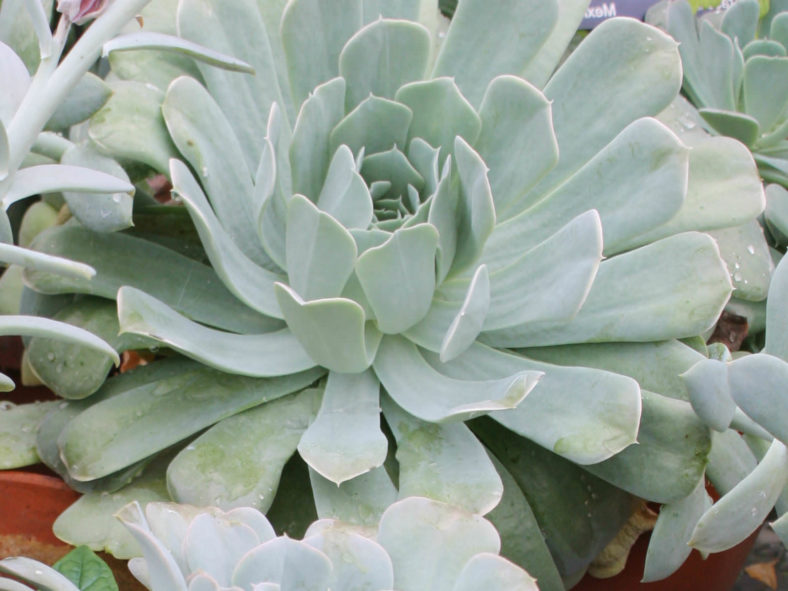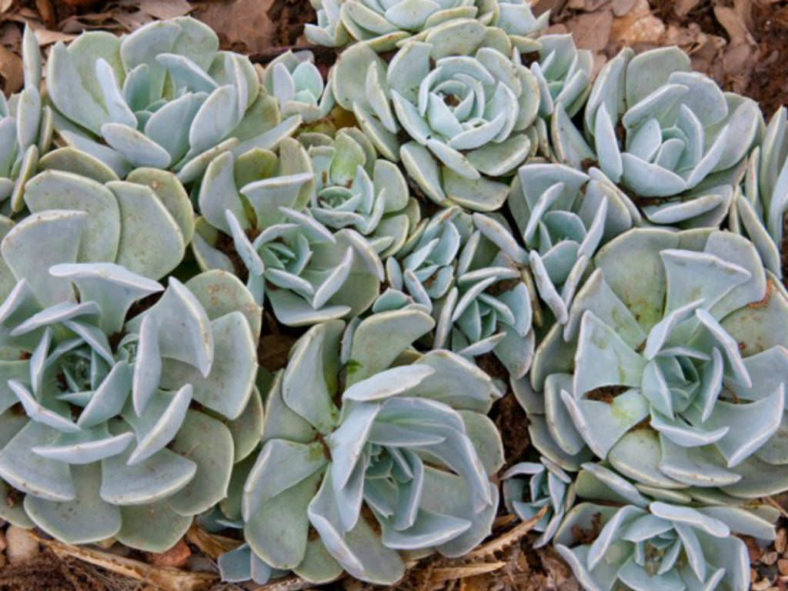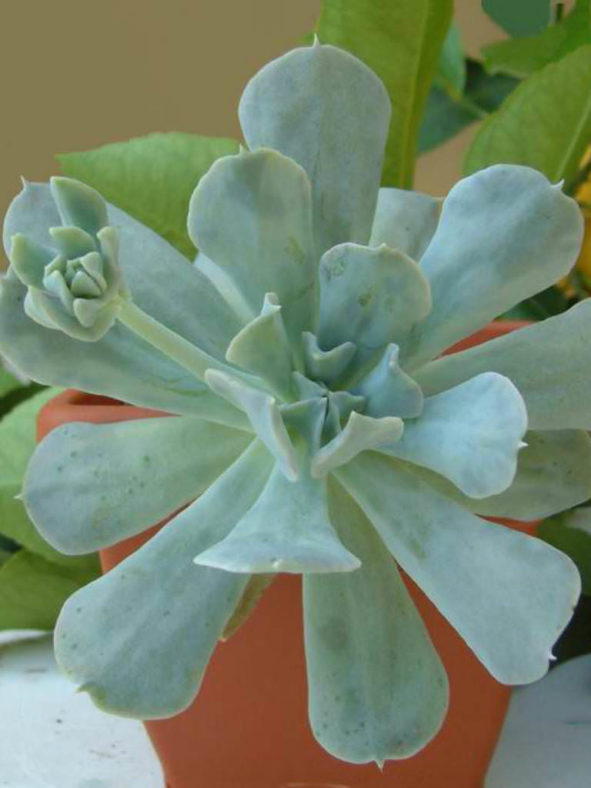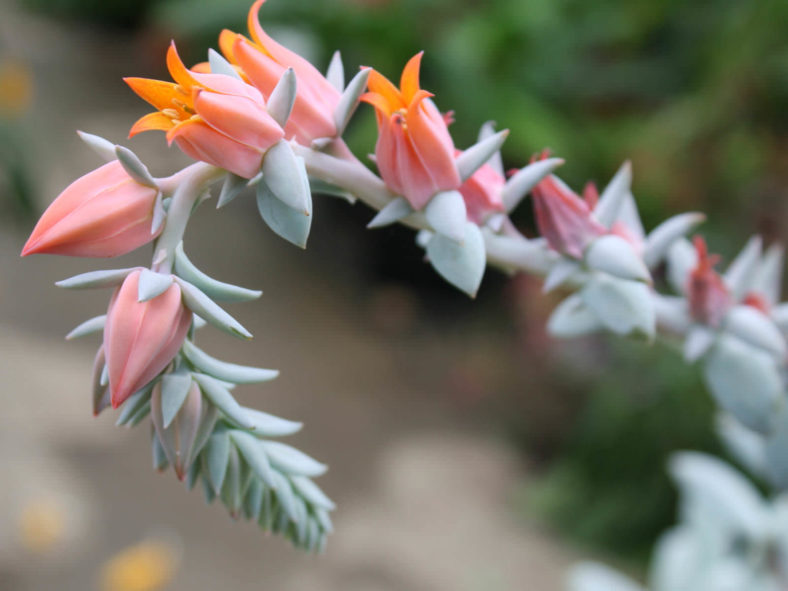Scientific Name
Echeveria runyonii Rose
Scientific Classification
Family: Crassulaceae
Subfamily: Sempervivoideae
Tribe: Sedeae
Genus: Echeveria
Etymology
The specific epithet "runyonii" ("run-YON-ee-eye") honors Robert Runyon (1881-1968), an American photographer, botanist, and politician who served as the mayor of Brownsville, Texas, from 1941 to 1943.
Origin
According to E. Walther, Echeveria runyonii was found in a garden at Matamoros, Tamaulipas, Mexico, as a cultivated plant, and its natural habitat was unknown. Several cultivars of this species have been named, including Echeveria runyonii 'Texas Rose', Echeveria runyonii 'Dr. Butterfield', Echeveria runyonii 'Lucita', Echeveria runyonii 'Tom Allen', and Echeveria 'Holy Gate' or Echeveria 'Holly Gate'. These plants are not conspicuously different from Echeveria runyonii, and the names may well be just nursery names.
Description
Echeveria runyonii is a fast-growing succulent that forms rosettes of silvery-grey to pinkish-white leaves. The rosettes can grow up to 4.8 inches (12 cm) in diameter. The leaves are spoon-shaped, with a short, pointed tip, measuring up to 3.2 inches (8 cm) in length and 1.6 inches (4 cm) in width.
The flowers are bright orange and yellow, appearing above the foliage on arching, up to 8 inches (20 cm) long stalks, typically in late summer or fall.
Forms, Cultivars, and Hybrids
- Echeveria runyonii 'Cook's Pride'
- Echeveria runyonii 'Illusion'
- Echeveria runyonii 'Topsy Turvy'
- Echeveria 'Caly Argentea'
- Echeveria 'Dondo'
- Echeveria 'Encantada'

Hardiness
USDA hardiness zones 9b to 11b: from 25°F (-3.9°C) to 50°F (10°C).
How to Grow and Care
Most common Echeveria species are not complicated succulents to grow, provided you follow a few basic rules. First, be careful never to let water sit in the rosette, as it can cause rot or fungal diseases that will kill the plant. Additionally, remove dead leaves from the bottom of the plant as it grows. These dead leaves provide a haven for pests, and Echeverias are susceptible to mealybugs. Finally, as with all succulents, maintaining careful watering habits and providing ample light will help ensure success.
Repot as needed, preferably during the warm season. To repot a succulent, ensure the soil is dry before repotting, then gently remove the pot. Knock away the old soil from the roots, removing any rotted or dead roots. Treat any cuts with a fungicide.
Most Echeverias can be easily propagated from leaf cuttings, although some are better from seeds or stem cuttings. To propagate a leaf cutting, place the individual leaf in potting soil for succulents and cover the dish until the new plant sprouts.
See more at How to Grow and Care for Echeveria.
Links
- Back to genus Echeveria
- Succupedia: Browse succulents by Scientific Name, Common Name, Genus, Family, USDA Hardiness Zone, Origin, or cacti by Genus
Photo Gallery
Click on a photo to see a larger version.


